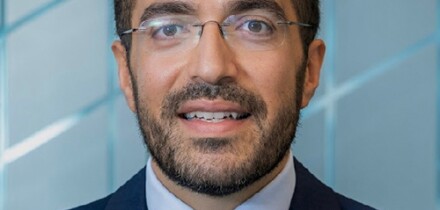
Good things come to those who wait. As of January 1, 2015, new legislation was passed in California to allow those investors who follow the Californian Government Code — state pension funds and municipalities — to buy bonds from the Washington supranationals.
The development followed six years of lobbying from the World Bank and is, unfortunately, indicative of the pace at which the supras are gaining traction in this market.
“We began our focus on penetrating the US investor base in 2009,” says George Richardson, head of funding at the World Bank in Washington, DC. “Our first target was the official sector. They manage a lot of money but are very conservative. They knew nothing about supras.
“Many were not allowed to buy supra debt because these treasuries are highly regulated and tightly controlled. Our ability to access that market depends on changes to state investment codes.”
Running concurrently to its official sector campaign, the World Bank is also ramping up attempts to educate another large potential investor base. Fortunately in this case, the supras do not have to wait for the clunky cogs of state law.
In January this year, the Federal Reserve adopted Basel III, and on implementing one of its key reforms, the Liquid Coverage Ratio, it has enabled its systemically important banks to buy supranational debt. Supras count as high quality liquid assets (HQLA) and qualify as tier one assets, carrying a 0% risk weighting.
Large banks have been growing as an important investor base for all supras. Ben Powell, head of funding at the International Finance Corp in London says that bank treasury interest has really taken off in the last two years and highlights the distribution statistics of a pair of his five year bonds to illustrate the point.

In August 2013, IFC issued a $3.5bn 1.75% 2018 of which 26% was sold to global bank treasuries. Fast forward two years and in July 2015, the supra sold a $2.25bn July 1.625% 2020, of which 48% was sold to global banks.
Now the supras are turning their attention to the hundreds of mid-tier banks in the US. While many do not fall under Basel III, those on the cusp of becoming $50bn in size are looking to boost their holdings of high quality assets.
Meanwhile, supply from the US government sponsored enterprises (GSEs), the likes of Fannie Mae and Freddie Mac, is dwindling, which should mean that US banks are forced to turn to the supras to meet their HQLA targets.
Several have already started approaching the supras, but funding officials acknowledge that there is still a long way to go.
“We’ve had a lot more incoming calls from US institutions and we’ve held some reverse roadshows with teams from these institutions coming to our office to learn who we are,” says IFC’s Powell.
“We haven’t seen this put into practice yet. Some of the state funds and some of the cities are starting to invest, but we are only seeing the top-tier US banks in our order books so far.”
Powell would have liked to have seen more engagement, particularly because the supras have HQLA level one status. The GSEs are a notch below.
Both Powell and Richardson believe that the biggest barrier to their success is knowledge. The majority of the mid-tier banks simply do not know what a supranational is.
Educating America
The education process is an arduous one, and one which requires a physical presence, something which the supras have not been able to commit large resources to yet.
“People have been asking who we are, what is a supranational?” says Richardson. “It’s hard to imagine people not knowing who you are but there is an entire world who haven’t heard of us. They’ve had such a massive agency market in the US, they didn’t need to know.”
Richardson is focussing on a dedicated push this year. The World Bank is in the process of collecting data such as trading volumes, liquidity and pricing, to provide the banks with as much information as possible.
One concern both he and Powell predict will crop up is liquidity. But Powell does not expect this to be an issue.
“Are we liquid enough as an asset class? Our benchmark pricing is on par with the GSEs and in time we’ll probably end up with more penetration. Knowledge is a key factor — information and getting on banks’ buy list as an eligible asset.”

It is difficult to get a sense of the scale of this market — there are over 190 institutions with assets of between $2bn and $10bn for example. But some indication can be offered by the following estimates.
Total foreign debt securities held by regional US banks — $240bn
Total US government agency paper held by banks with a balance sheet of over $25bn — $9.2bn
Total US government agency paper held by banks with a balance sheet of over $5bn — $12bn
No appetite?
However, while the supranationals are clearly keen to access this demand, a US mid-tier banks analyst based in New York thinks that the supras are overestimating investor appetite.
Demand, he says, is likely to come from the big or international banks who are looking for a diversification play. The smaller banks have no need for such paper.
“While the World Bank and other supras meet the requirements to qualify as tier one assets, only 25 banks in the US are subject to LCR,” he says. “The majority of mid-tier banks are not covered and even the larger mid-tier banks are almost 100% in compliance with LCR already.”
He also points out that those banks are focused more on liquidity and yield. Agency debt, in his opinion, does not offer enough of the latter.
“Why would they buy something yielding 20bp when they can get 25bp by parking their cash with the Federal Reserve overnight,” he says. “The banks can’t afford that debt, let alone not having a clue who the World Bank is.”
Rather than buying expensive tier one assets, the mid-tier banks are focussing on level 2A and 2B assets which offer more yield.
“Very few regional banks I know will buy this,” he says. “I’m not sure this niche story is of interest to them. Bonds that yield almost nothing are a no-go.”
The US banks analyst concludes that the supras should continue to focus their effort on attracting the large banks who would buy the debt as a diversification play.
“We can get the supras in front of customers and a couple will buy, they’re always keen to diversify and show interest in a new name, but right now my customers want yield.”

Powell acknowledges the argument but says that there is hard evidence that some of the smaller banks are interested but adds that he isn’t expecting to see an increase across the board.
Instead, he says the focus should be on state funds and municipalities despite the arduous approval process this involves. “This is where we can get incremental demand in the US,” he says. “Regardless of bank treasury demand for supras, there is a bigger opportunity to attract state funds and interest at a local government level.”
While it seems unlikely that mid-tier US banks are going to provide a vast source of funding anytime soon, the supras remain optimistic. “It’s a very long process but definitely worth doing,” says Richardson. “As an issuer, it is in our interest to have as diversified and as global an investor base as possible. It adds demand to our securities, lowers execution risk and improves liquidity.”





